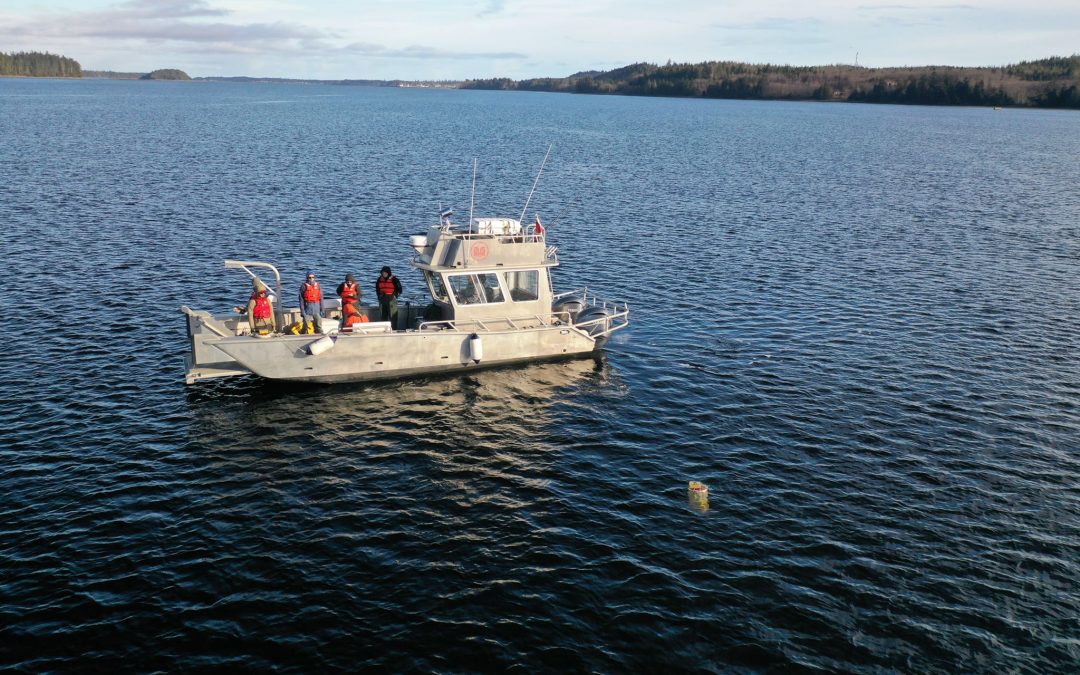In the last week of March, 2022, PRIMED staff members Ben, Riley, and Chloe, plus grad student Aidan McKenna, travelled to Haida Gwaii to deploy an Acoustic Doppler Current Profiler (ADCP) to collect tidal current data in Masset Inlet. They met up with fellow renewable energy researchers Greg Trowse and Tristan Guest of LunaSea Solutions to collaborate on a drones and drifters survey in the same study area.
An ADCP is a device that measures currents and ocean waves using an acoustic signal. In this application, PRIMED’s ADCP is mounted to a tripod frame with about 4.5 feet between the legs. Weights are added to the frame to ensure that it is stable on the seafloor. The dry loaded frame weighed about 250 lbs. It will stay on station for ~90 days, to gather as much information on tidal harmonics in the area as possible, given battery constraints. The LunaSea ADCP (a Nortek Eco) is mounted in a smaller tripod frame with metal plates added to the feet to weigh them down. Their frame was 150lbs and was deployed for 72 hours.
The drone and drifters survey is a resource characterization method wherein “drifters” (some type of floating biodegradable object, like a pumpkin or block of ice) are deployed from a boat into the water en masse, then a drone is used to capture imagery from a stable position to track the surface current velocity based on its influence on the movement of the drifters. In this application, ice was used. GPS drifters were also used and tracked visually with the drone. Two drone flights with video capture of the drifter motion were completed over the area that the LunaSea ADCP was deployed.
The team arrived to Masset on March 27th and were greeted by a gorgeous sunny day. They spent the afternoon exploring the natural beauty of North Beach and Tow Hill, even catching sight of Alaska from the Northern shores. Interpretive signs in the area taught us the Haida stories of the creation of the rocky landscape, in addition to the geological explanation for the basalt columns which make up the hill.
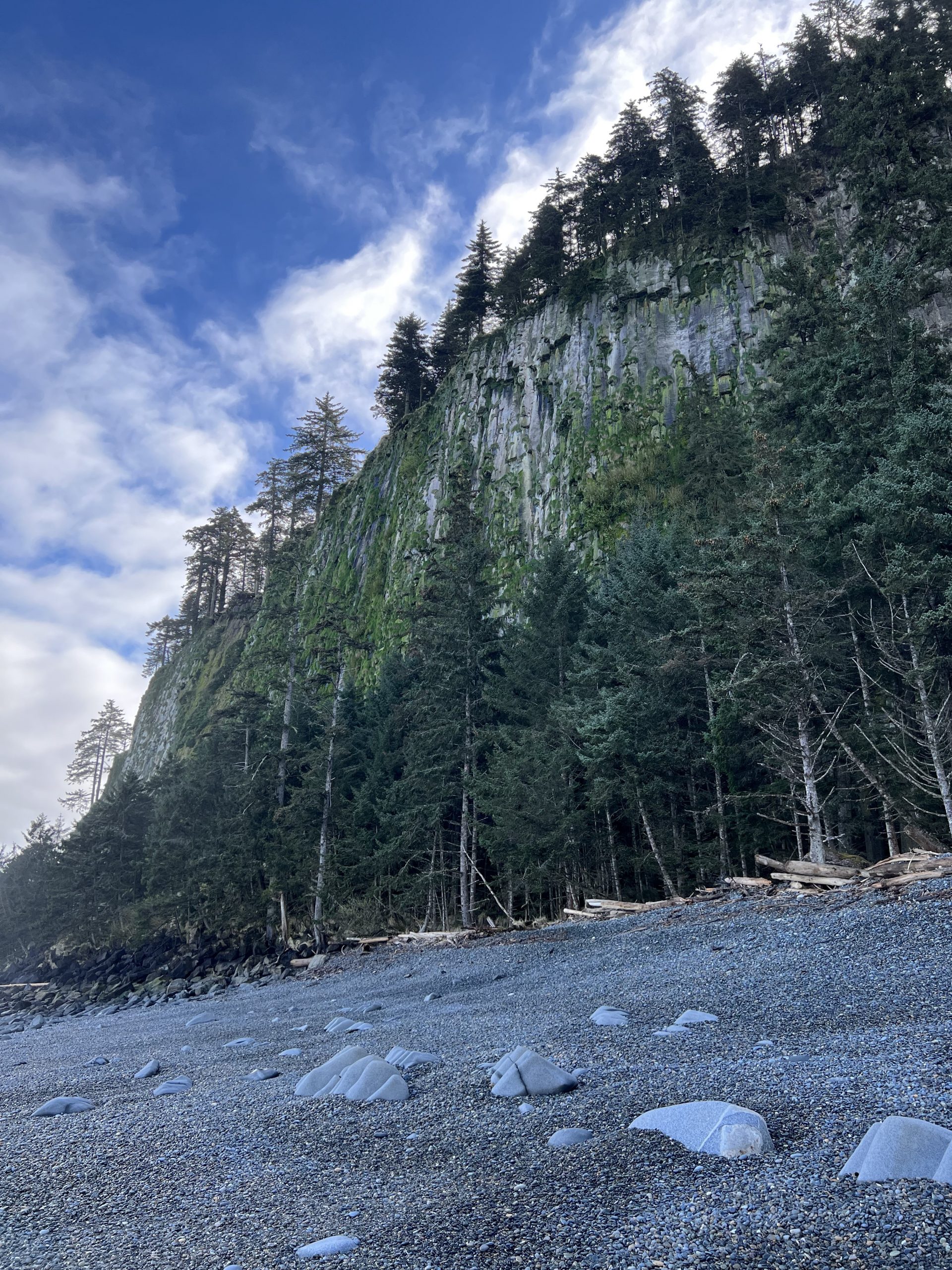
Columnar basalts of Tow Hill, with lush forest and pebbly North Beach shores.
The vast expanse of North Beach, as seen from the top of Tow Hill, looking North-West.

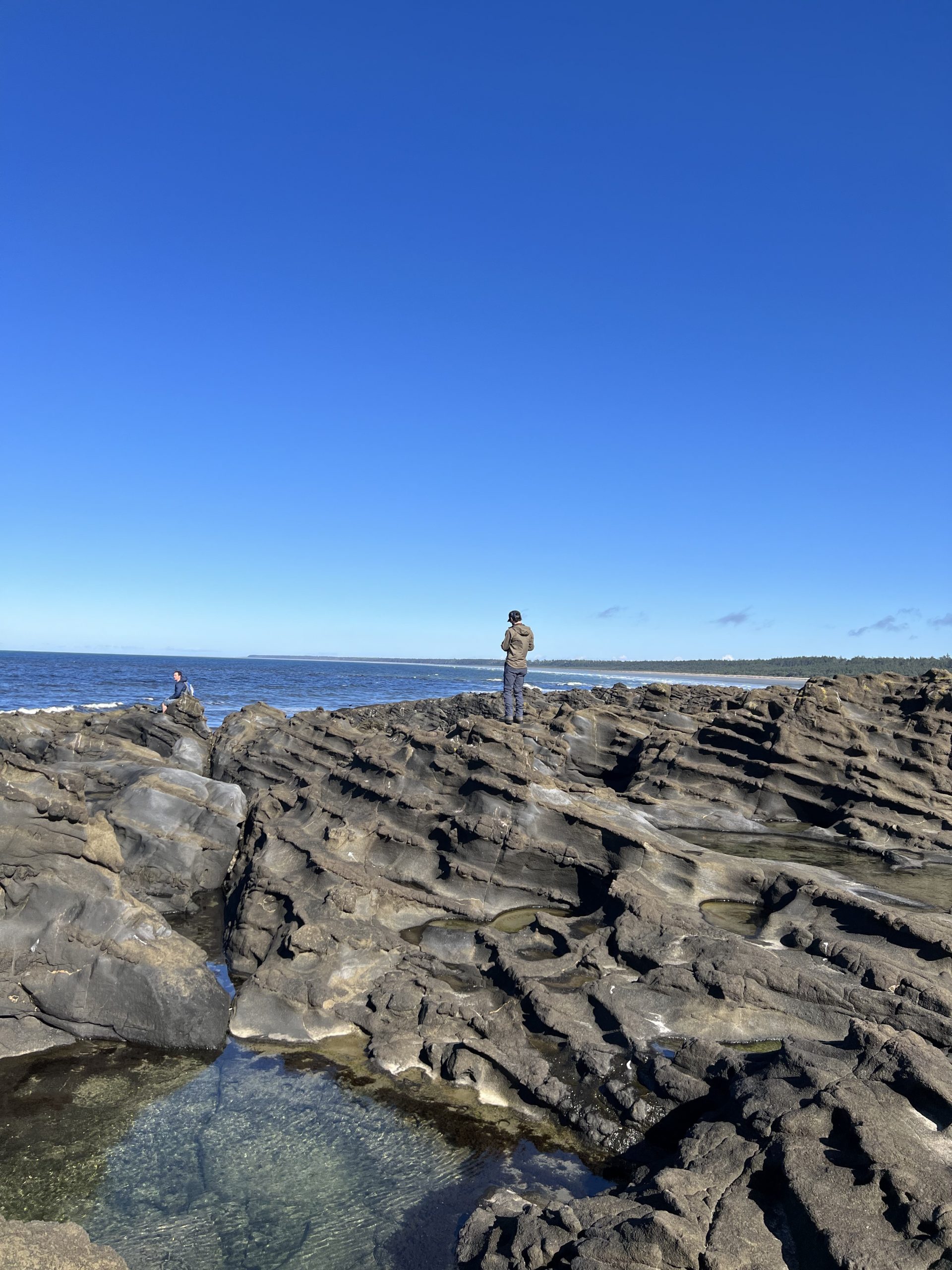
Layered sedimentary rocks along the North shore of Haida Gwaii, below Tow Hill.
Bright and early Monday morning, the PRIMED team worked to finish up the assembly of their ADCP frame to ready it for deployment, and the LunaSea team did the same for their own ADCP.
Masset Inlet on the morning of the ADCP deployments (March 28th, 2022).

The whole group went out on the landing craft, the Duu Guusd, to scope out the planned deployment locations in Masset Inlet while they waited for slack tide. When the currents slowed enough for safe deployment, the team lowered the LunaSea ADCP frame to the seafloor with a marker buoy showing its location from the surface.
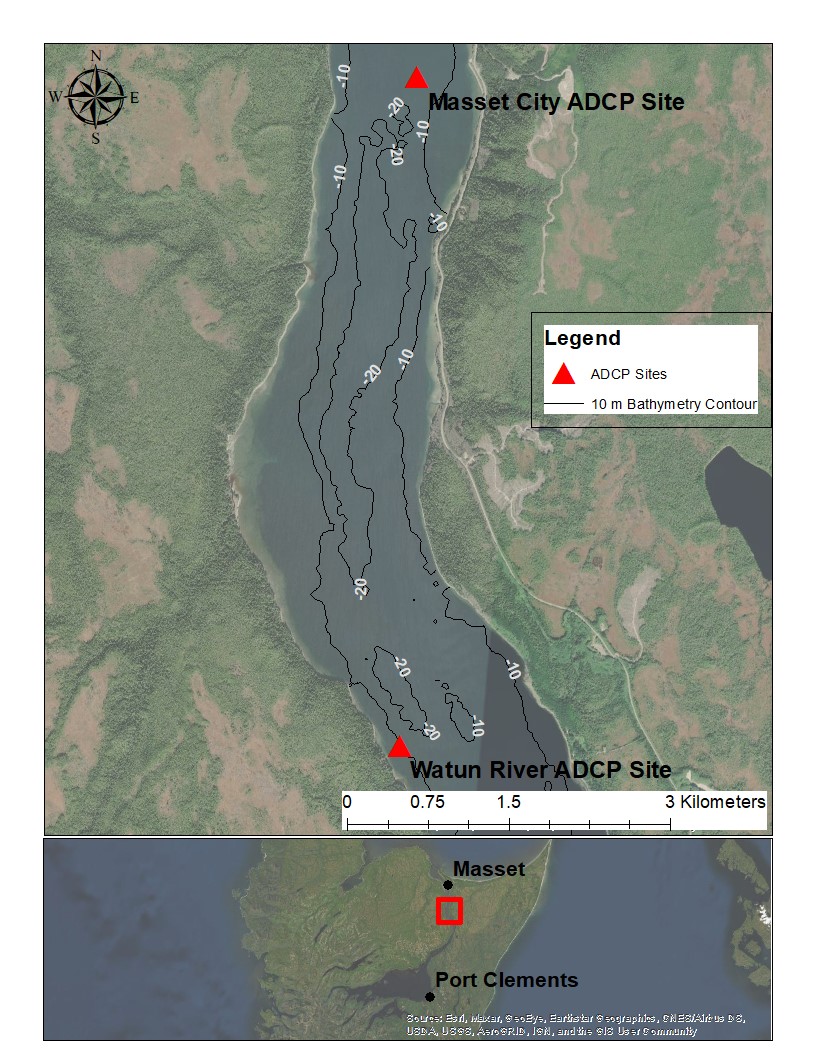
Map of Masset Inlet, showing the deployment locations for the two ADCPs and the drones and drifters survey. The LunaSea Nortek Eco ADCP was deployed at the Masset City site and the PRIMED Nortek Signature 1000 was deployed at the Watun River site.
It was going to be a few hours until the next slack tide so Len (skipper of the Duu Guusd) brought the team back to shore for lunch and to collect the dive team before PRIMED’s ADCP deployment.
Divers were present for the deployment of PRIMED’s ADCP, to ensure that the frame was well orientated on the seafloor and the ADCP device was looking upwards properly. They also removed the lowering lines used for the actual deployment. It is important to have these extra assurances since this ADCP will be in the water for three months and we want the data to be as accurate as possible.
Diver’s GoPro photo of the PRIMED ADCP on the seafloor, including details of the bottom substrate. Note how dark the water is in the photos, even with use of flashlights. This is largely due to tannins, leached from decomposing plant matter in the surrounding forests, present in the Inlet.

The following day, gale force winds swept across the Northern Pacific, reminding the group about another consistent source of energy present in Haida Gwaii. Since the conditions were not ideal for work on the Inlet, so the team did a bit of office work at the hotel before doing some more exploring. They visited the Masset cemetery, which is located is a lush mossy rainforest.
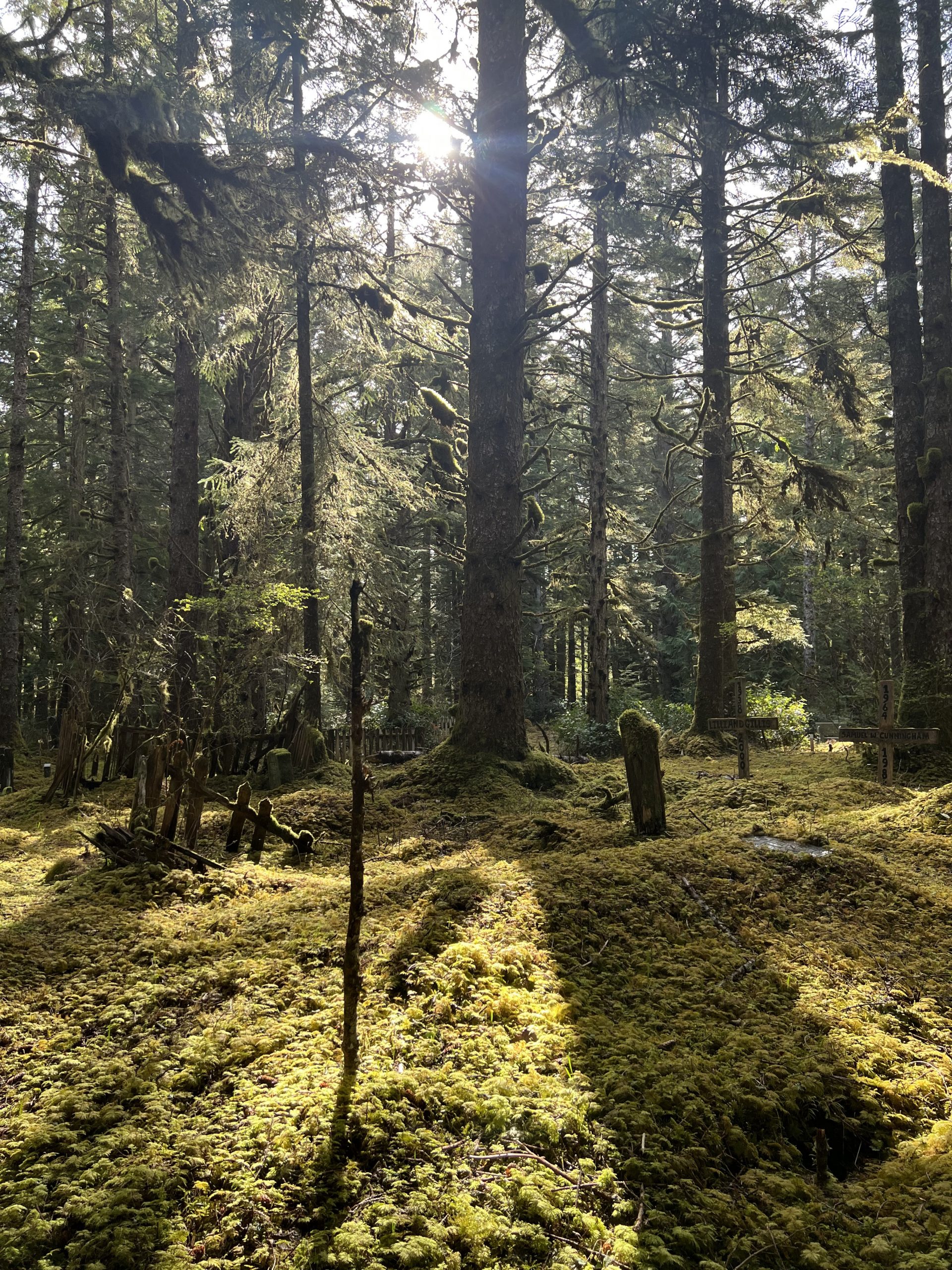
Mossy Masset Cemetery
On Wednesday, the winds died down, allowing for safe drone flights, so PRIMED and LunaSea staff piled onto the Duu Guusd once more with Len at the wheel for the drones and drifters survey. Working when the current speeds were high, they would first calibrate the drone and have it hover above the water. Then they would let the vessel drift, throwing drifters out of the boat and into the view of the drone. With the drone remaining stationary above the water capturing video footage, the drifters would pass through the frame and the drone tracks their movement. They would repeat this process while the drone was 120m, 100m, 75m, 50m, and 25m above the surface of the inlet. Then the boat would stop drifting and the crew would gather the GPS drifters back into the boat. Since the ice drifters can melt safely without having a devastating effect on the inlet, they remained in the water.
Greg and Tristan preparing the drone for take-off.

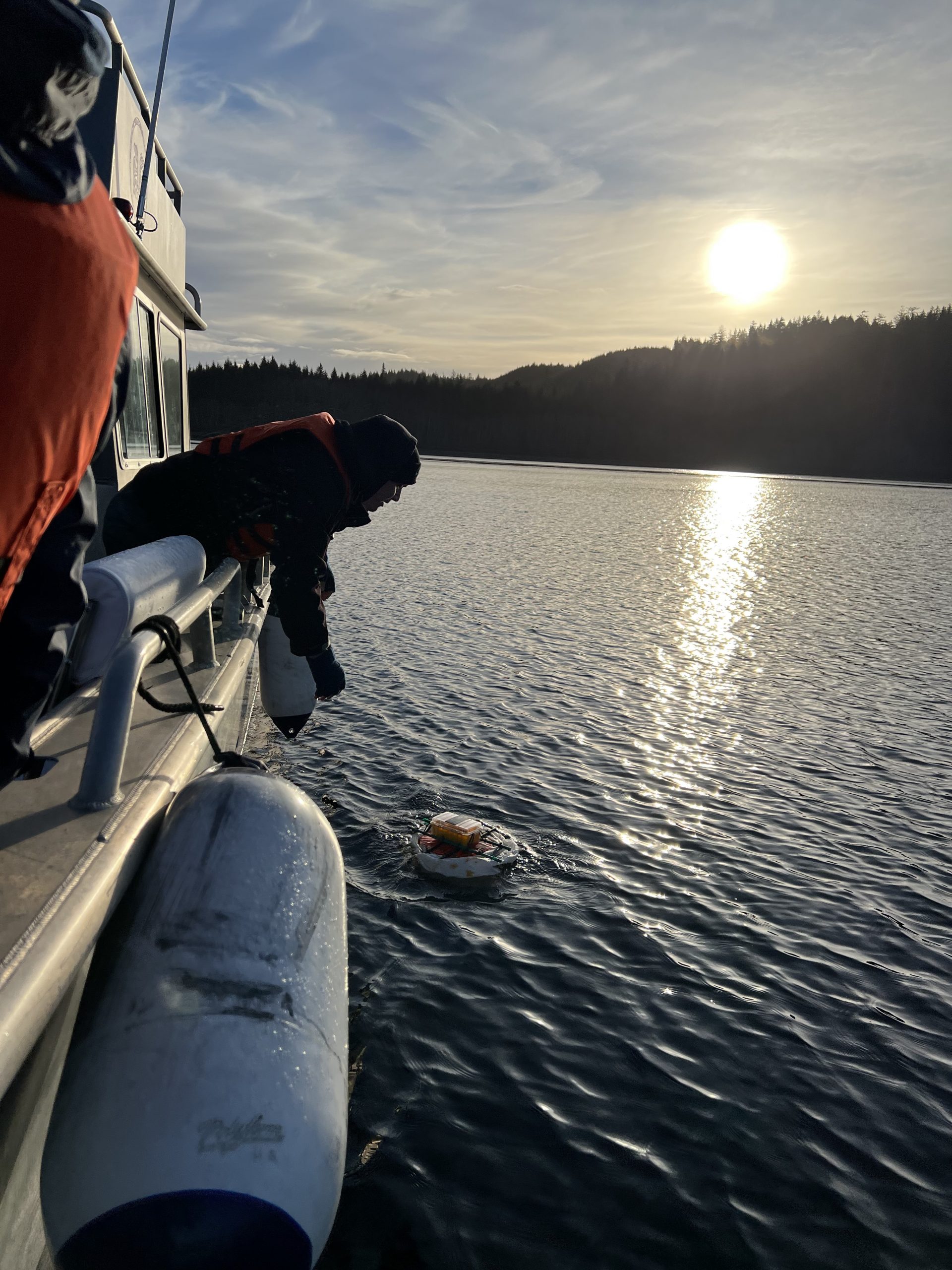
Riley releasing a GPS drifter into the Inlet.
Ben and Tristan preparing the ice blocks to be used as drifters on the deck of the Duu Guusd.
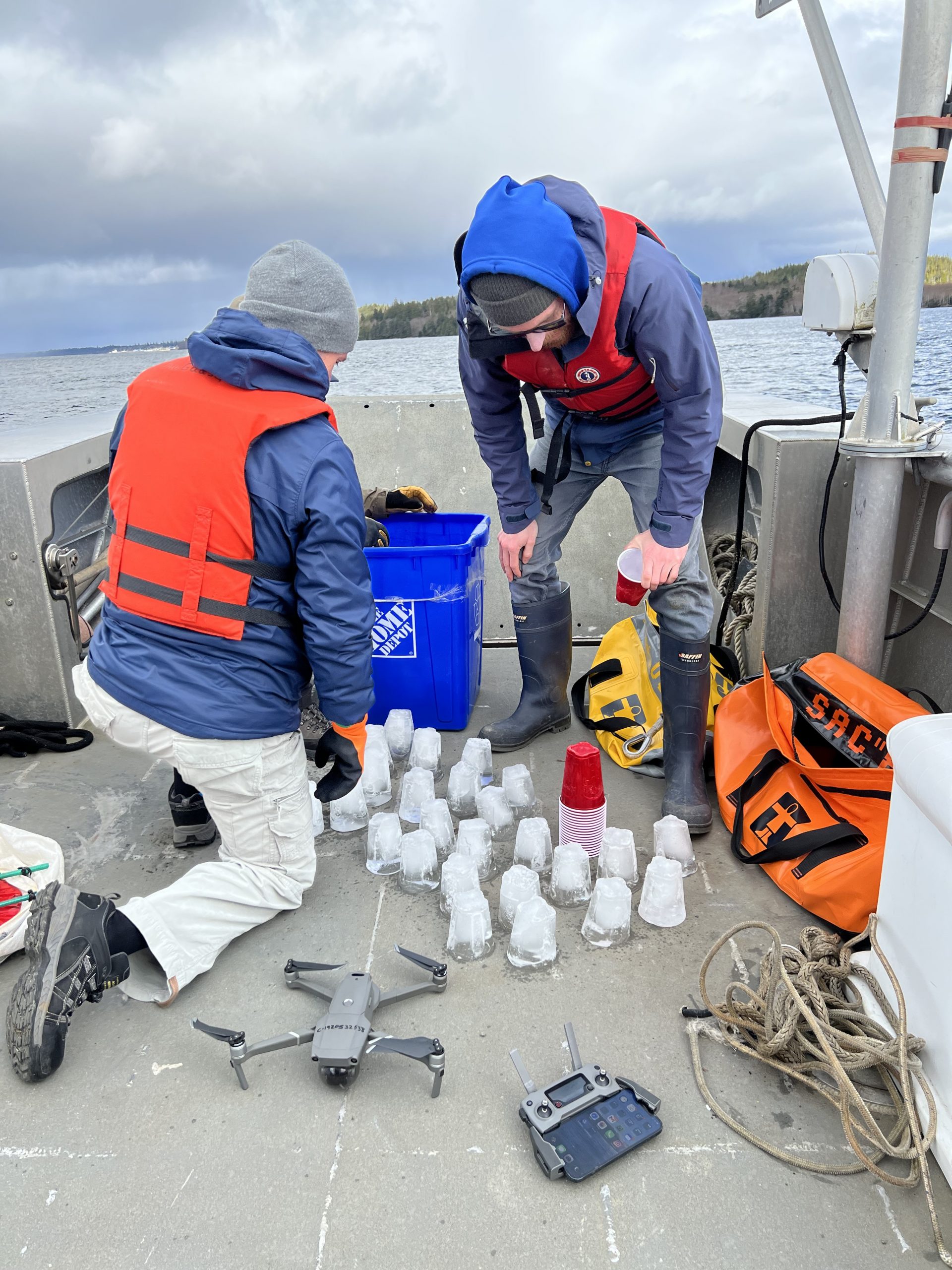
The data from these surveys and ADCP deployments is gathered for the purpose of performing assessment of the resource for the area. This will be needed if the community decides to look further into installing a tidal energy converter in the future.
It was a huge privilege for PRIMED staff to visit Haida Gwaii to study tidal energy. The communities there are largely powered by diesel at present, but when speaking with community members, and reading information shared by Swiilawiid, it is clear there is a definite desire to change energy sources for the Islands.
